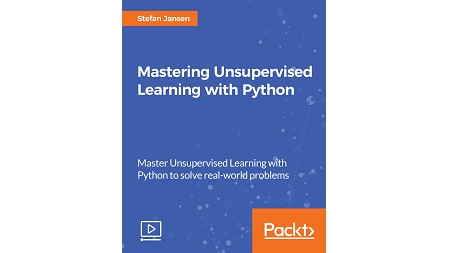
English | MP4 | AVC 1920×1080 | AAC 48KHz 2ch | 3h 52m | 834 MB
Master advanced clustering, topic modeling, manifold learning, and autoencoders using Python
In this video course you will understand the assumptions, advantages, and disadvantages of various popular clustering algorithms, and then learn how to apply them to different data sets for analysis. You will apply the Latent Dirichlet Allocation algorithm to model topics, which you can use as an input for a recommendation engine just like the New York Times did. You will be using cutting-edge, nonlinear dimensionality techniques (also called manifold learning)—such as T-SNE and UMAP—and autoencoders (unsupervised deep learning) to assess and visualize the information content in a higher dimension. You will be looking at K-Means, density-based clustering, and Gaussian mixture models. You will see hierarchical clustering through bottom-up and top-down strategies. You will go from preprocessing text to recommending interesting articles. Through this course, you will learn and apply concepts needed to ensure your mastery of unsupervised algorithms in Python.
By the end of this course, you will have mastered the application of Unsupervised Learning techniques and will be able to utilize them in your Data Science workflow—for instance, to extract more informative features for Supervised Learning problems. You will be able not only to interpret results but also to enhance them.
After having taken this course, you will have mastered the application of Unsupervised Learning with Python. All the code and supporting files for this course are available on Github at https://github.com/PacktPublishing/Mastering-Unsupervised-learning-with-Python
An exhaustive course packed with step-by-step instructions, working examples, and helpful advice. This course is divided into clear chunks, so you can learn at your own pace and focus on your area of interest.
What You Will Learn
- Master the Unsupervised Learning landscape and apply Deep Learning
- Use alternatives to K-Means and Gaussian Mixture Models for your data analysis
- Compare and evaluate the results of different data analyses to determine the quality of clusters, time, and memory usage
- Use the bag-of-words model to convert text to features to preprocess text
- Apply algorithms such as LSA, LSI, and LDA to model topics using gensim and sklearn
- Compare T-SNE and UMAP with PCA and ICA, in the context of how different algorithms work and when to apply them
- Learn the Python application of TSNE and UMAP to image data using sklearn and umap
- Leverage Unsupervised Learning to assess the difficulty of your Supervised Learning algorithms on a dataset
- Evaluate the results of analysis applied to various datasets using Unsupervised Learning
Resolve the captcha to access the links!